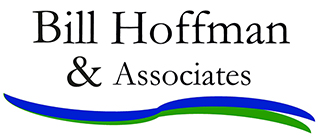As a conscientious leader of your organization (board member or senior staff), you put a lot of thought and effort into developing your strategic plan. Ideally, the planning process resulted in quantifiable goals that will be tracked over the course of the year to measure progress on the plan. Peter Drucker’s quote, “What gets measured gets improved,” is as valid today as when he first said it. Bu
t the challenge is how best to track and report on progress, because you’re engaging busy volunteers who are probably only working on portions of the plan, and then only sporadically. Because many people are visually oriented, charts and graphs are natural ways to report measurement. That’s why many organizations regularly produce dashboards as their windows on performance.
The image above is a typical goals dashboard for an organization with five focus areas (Volunteer Development, National Conference, Regional Workshops, Membership, and Major Gifts). Although not every organization will track all of these areas (and many organizations will track different metrics), these are good examples to show how to structure a goals dashboard. Let’s walk through this example to learn the reasoning behind the various components’ development.
UNDERSTANDING THE DASHBOARD
In the upper left (“Data as of Mar. 31, 2016”) is a donut graph. It shows how much of the fiscal year (75 percent in this case) the data represents. It’s essentially a countdown clock where the red portion (time where action can be taken) gets smaller with each report. I’ve found that adding a sense of urgency (“We agreed to get these goals completed in this time frame”) is important to maintain momentum.
The upper-right portion is a summary bar graph showing overall progress on each focus area. Typically one committee or board member takes responsibility for progress in a focus area. This summary provides a quick snapshot of progress compared to the elapsed time. In this case, because 75 percent of the year has elapsed, if the committee is not 75 percent or more done with its focus area, then the members need to work a little faster. It’s very motivating for board members to watch these bars progress with each board meeting as work is being accomplished in their respective focus areas.
Let’s jump to the bottom and look at the key for this dashboard. Note that this organization made the decision to use budgeted numbers in its plan when there are financial goals. The green highlight is a reminder in each case that these are the goals in the budget. To remain consistent, the actual figures come from each month’s financial reports; they’re highlighted in blue. The “Status Key” provides insights into the icons used throughout the dashboard in the “Status” column.
The goals listed in focus area 1 (Volunteer Development, gray bar) show different types of measurements. The first, “Develop Board Job Description,” is a simple “complete” or “not complete.” The others have numeric targets. Thus, the goal for item 1B isn’t just “Develop Committee Membership Job Descriptions” but to develop four job descriptions. Notice the “Status” icons—here we see how consistent representation throughout the dashboard allows readers to visualize if goals are complete, on track, or behind schedule.
The second focus area (National Conference, blue bar) introduces another concept. Goals 2A through 2D refer to detailed task lists that the committee and/or staff are using to work toward these goals. Although the board may not need to see the details, the dashboard allows it to track whether or not progress is being made on the tasks deemed crucial to a successful conference. The financial performance of the conference is vital for the board, so specific figures are shared in lines 2E–2G as well as a column graph. To keep viewing simple, the color scheme is consistent (i.e., green for budget and blue for actual).
Focus area 3, Regional Workshops (red bar), offers two more examples of how visualization makes synthesizing a large amount of data easier. A pie chart shows net proceeds for the workshops vs. budget (again, blue and green, respectively). The map provides a quick and easy way to determine if the goal of offering workshops “in diverse geographic areas” is being met. The stars on the map are more effective than a list of cities where the workshops have been held would be.
Focus areas 4, Membership (light blue bar), and 5, Major Gifts (purple bar), use progress bars. For both focus areas, the financial goals are reported numerically, but the progress bars offer visual reinforcement of how much must still be done.
USING THE DASHBOARD
The dashboard is an excellent way to report on progress toward goals at each board meeting. The structure should be consistent, concise (one page if possible), and visually appealing. Ideally, it should be as self-explanatory as possible (realizing the first time someone sees it, it’s a good idea to walk him or her through what he/she is looking at). The source of the numbers needs to be impeccable; if the accuracy of this information is questioned, then the value of the dashboard is questionable as well. The one caveat is that someone in your organization needs to know Excel, as the dashboard utilizes some advanced Excel features (e.g., charts and conditional formatting).
I’ve seen dashboards become the centerpiece of many productive board discussions. The value of a simple, consistent presentation is that board members no longer struggle to digest information but are able to use it to move the goals of the organization forward.
Published at: Guiding Star


